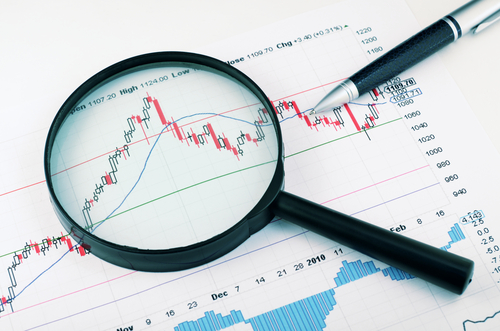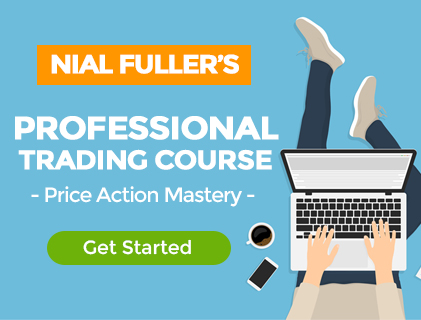Perform a Trade ‘Autopsy’ Every Month
 As an ongoing learning tool, traders should perform what I call a ‘trade autopsy’ on their trades by carefully dissecting and assessing both failed and winning trades. For me, this kind of weekly or monthly trade review was an incredible learning tool when I was starting out, and it’s really what ‘sharpened’ my trading skills.
As an ongoing learning tool, traders should perform what I call a ‘trade autopsy’ on their trades by carefully dissecting and assessing both failed and winning trades. For me, this kind of weekly or monthly trade review was an incredible learning tool when I was starting out, and it’s really what ‘sharpened’ my trading skills.
What it really boils down to is asking yourself a series of questions about each trade after it’s closed out. You can make a simple checklist out of these questions or even add it to your trading plan at the end. Just make sure you do the trade ‘autopsy’ because it can significantly shorten the trading learning curve and will help you develop an effective trading routine.
The basic questions to consider in your trade autopsy…
Obviously, some of the following questions will only apply for a win and some only for a loss. You may add to this list if you want, but don’t get too carried away, just stick to the basic questions for your trade autopsy, I’ve detailed them below…
Questions we need to ask ourselves regarding trade setup and entry:
- How could I have avoided that kind of failed signal?
If you took a loss, you’ll need to determine if it was a loss because you over-traded / traded when you knew you shouldn’t have / didn’t follow your trading strategy, OR was it just a normal statistical loss that was unavoidable (you will have some losses even if you’re trading properly, this is normal)? This is an important question to ask, because if you’re losing from over-trading, it’s a big problem that you need to end as soon as possible if you don’t want to blow out your trading account.
- Why was this signal such a good one?
This question you can ask of a winning or losing trade (losing trades can and should be good setups if you’re sticking to your trading strategy and not over-trading). If it was a very obvious looking trade setup, describe what it looked like and make a quick note about the surrounding market conditions, e.g., “long-tailed bullish pin bar buy signal from support in up-trending market, pin bar tail was protruding down through support, making an obvious false break of the level.”
- What confluence was and was not present on the winners vs losers?
What confluence did the trade have? Was it rejecting a key level as well as a moving average? Maybe it was at a 50% level and a key chart level. This is where you will answer what type of chart confluence the trade had or the lack of confluence on a trade. Answer this for both winners and losers so you can see any patterns in differences in confluence between them.
- What factors were and were not present on any respective trade vs the others?
Were there any other factors that you see that may have contributed to a particular trade winning or losing?
- What went wrong and what went right after initial entry that assisted the trade’s outcome?
If you noticed anything that further supported the trade after you entered, discuss that here. This could be another signal in-line with the trade, maybe on a different time frame, or maybe a fresh breakout from a level, etc.
Questions we need to ask ourselves regarding trade management:
Trade management is usually where traders mess things up. Most mistakes that traders make with trade management are the result of simply doing too much and being over-involved. Generally speaking, the less you micro-manage your trades, the better you’ll do over the long-run. Here are some questions to ask yourself regarding trade management when doing your trade autopsy:
- What would have happened if I left the trade alone and didn’t exit early at a small loss or small gain?
In a recent article, I wrote about something I call ‘trading account death by a thousand cuts’, it’s basically when you lose money / blow out your trading account because you take a lot of small losses. Small losses are generally better than bigger ones, but the best way to take a loss is just to accept your pre-determined 1R risk amount and place your stop loss logically according to market structure, and let the trade play out, give it the room it needs to breathe, and either take the loss you predetermined you’re OK with, or you’ll make the profit. Taking losses before your stop loss gets hit all the time means you’re not giving your trading edge (strategy) the time and space it needs to play out and potentially work in your favor.
- What would have happened if I didn’t exit the trade right before the profit target and instead left it open…would I have ended up losing or winning?
This one’s pretty self-explanatory. It’s a good question to ask to see how well “setting and forgetting” your trades would have worked (usually it works quite well).
- What would have happened if my stop loss was just a bit wider…would it have made the difference?
Sometimes having your stop loss just a little wider than you initially want, can be the difference between a winner and loser. Checkout my trade entry trick article for more on how to get better stop loss placement.
- What would have happened if my risk reward was less, say 2R instead of 3R… would that have made the trade profitable?
Sometimes, it pays to take a smaller reward, or rather a more logical reward. We always want to aim for at least near a 2R reward, but I find that traders often have unrealistic expectations about how much reward they can expect on any given trade.
- What was your mental state while the trade was on? Were you sleeping good?
This one is very important and you need to answer it honestly (as you should all the other questions here of course). But it’s very important you take stock of your mental state while you have a trade on. It’s normal to check your trade two or three times a day, but if you’re sitting at your desk at work and all you can think about is your trade and what it’s doing, you have a problem. If you’re not sleeping well because you can’t stop thinking about your trade and you’re checking your mobile trading app constantly, you have a problem. Usually this type of preoccupation with a trade is the result of trying too hard to make money, i.e., you’re risking too much per trade or you’re over-trading and trying to ‘force’ your trading account into profit.
Conclusion
Don’t get carried away with asking yourself questions of “what if” scenarios, stick to the basics and just make sure your learning something and paying attention to the information you discover.
There is no perfect system or way to do this, the important part is that you’re analyzing not only the trade setups and charts, but your own behavior as well. Over time, doing these ‘trade autopsies’ should help you gain a deeper understanding of your trading strategy and how you should behave in the market to maximize your trading results.






Thanks for another great article.
Good day Nial
All the questions and the answer you gave to the lessons are perfect on what I’ve learning about the trading.
Thank you very much for perfect teaching of your work.
Thabo RSA
Cheers Nial, great article. Sometimes we focus so much on the now and forget about where we have been and how much it can help us to move forward.
Thanks, your work and guidance has turned my trading around.
Thanks Nial ,very nice artcle.
Thanks for this. I also do an autopsy on all the trades I missed or failed to take and am regularly shocked to see how much money was up for grabs in the market on a weekly basis
Thankyou!
Excellent template Nial to use going forward for traders of all skill levels and experience. I really like what you say about the fact that sometimes we just have to, and I am using my own words here, “let it go”, it was a statistical loss that will happen in the random outcome of trades.
Nice article Nial. Thanks again, this shall be another activity to add -on to my trading journey!
Good work!
thanks coach really good way to anañyze what we are doing right and wrong.